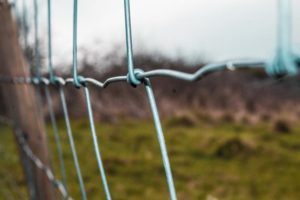
There are many scenarios in which temporary fencing will be your best fencing option.
Temporary fencing, to put it simply, is fencing that isn’t permanently installed, and it can be removed easily. For fencing that’s not meant to last long, you might wonder why it would ever be more useful than fencing that will last much longer. But temporary fencing has its uses. There are many scenarios in which temporary fencing will be your best fencing option.
Construction Sites
Construction sites are a common place for temporary fences to be used. Many dangers are on a construction site, and having a border that keeps people away from the danger is perfect. However, once the construction project is done, you won’t need that border anymore. Temporary fences can serve their purpose during construction, then be removed easily once the project is finished.
Temporary Fencing for Traveling Fairs
Perhaps you’ve seen a traveling fair show up near where you live before. They offer various attractions and concessions that bring plenty of enjoyment to many places. Temporary fences are used at these fairs to separate the various areas of the fair. It also makes admissions easier by using gated fences that prevent people from sneaking into the fair without a ticket.
Temporary Fencing for Races
Whether it’s a small town race or a larger racing marathon in a big city, temporary fences are useful for marking pathways for the runners and crowds who show up.
Temporary Fencing for Remodeling
In a similar manner to construction sites, homes can benefit from temporary fences whenever there’s remodeling happening. House projects create a lot of debris, and they are not always a safe place for everyone. Temporary fencing helps maintain the integrity of the workplace, keep out unwanted guests and critters, and keep all of the tools needed for the job on the premises.
Landscaping
Temporary fencing isn’t just for big businesses. People’s homes can benefit from some fencing as well. Large-scale landscaping projects can often benefit from a fence’s protection. As an example, if you’re sodding your yard, you can use temporary fencing to keep critters off of your land.
Weddings and Other Private Gatherings
Outdoor and backyard gatherings are getting more popular, and these types of events benefit greatly from temporary fencing. You can create a barrier that separates your gathering from everywhere else, giving your party more privacy. The border fencing creates keeps all of your guests in one area, which is especially important if there is alcohol at the event. You can also prevent unwanted guests from crashing your party.
Let Hercules Fence Help Set Up The Perfect Fence For You
Hercules Fence takes pride in being experts in residential, commercial, and high-security fencing. We have been serving our clients since 1955, with only the most knowledgeable of staff. Our staff is ready to serve you from Maryland and the Washington Metropolitan area. Our branch offices are in Manassas, Richmond, Newport News, Norfolk, Virginia, and Maryland.
Visit our website to see how we can be of service to you. Also, follow us on Facebook, YouTube, Twitter, and Linkedin to stay up to date with our latest news.
The post When to Use Temporary Fencing appeared first on Hercules Fence.